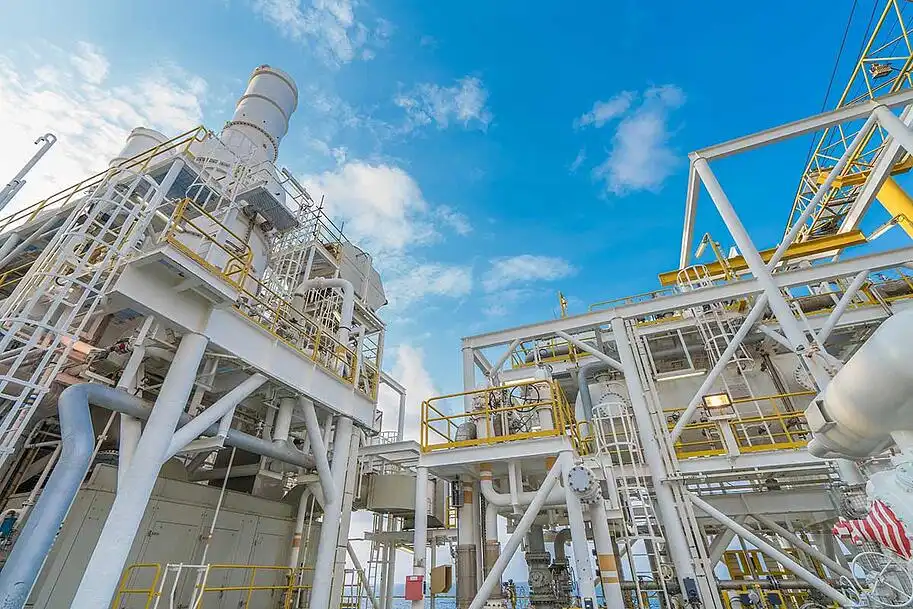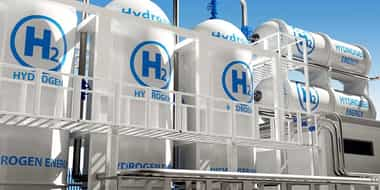
Feb 10, 2023
Blog Energy & Sustainability Could waste heat recovery be the answer to the energy crisis?
Energy security is crucial to a functioning society. In an age plagued by rising costs, depleting resources, and an ever-looming climate crisis, our energy has come under threat. Finding a long-term, sustainable energy solution is one of the most defining issues of the era. While renewable energies like solar and wind power present glimmers of hope, there’s one significant untapped industry that could provide promising returns: waste heat recovery.
Power stations across the world produce vast amounts of heat as a by-product. Currently, most of this is leaked as waste into the environment through cooling towers. In France alone, it’s thought that as much as 51 TWh/year, or 16% of the industry’s annual fuel energy use, could be recovered. In the US, this figure is as high as 20%. Losses are high, but governments and energy suppliers are wising up to the cost-savings and increased efficiency that heat capture offers.
In the UK, trials began in 2021 to capture the heat from network transformers owned by the National Grid. Similarly, the high temperatures in the London Underground’s Northern Line are being funnelled back into homes in Islington. The trend of turning waste heat into power is gaining velocity, and the industry is geared toward expansion. BCC Research has predicted that the market for waste heat recovery systems will reach heights of $89 billion by 2027.
Emerging technologies are widening the market
At the core of waste heat capture lies cost-effectiveness and operational efficiency. Around two-thirds of the energy used to generate electricity is lost in the atmosphere, and the distribution of energy to end users causes further loss. But up until recently, the margin for cost-effective waste heat capture was relatively narrow.
Only waste collected from combustion exhaust streams that reach temperatures above 500°F has been considered economically viable. These are generally sourced from industrial processes in the calcining of materials like cement, lime, alumina, and petroleum coke. While this has acted as a foot on the brakes of waste heat capture, the limit is starting to lower. New technologies like Organic Rankine Cycles (ORCs), and future developments in alternative power cycles make it economically feasible to generate electricity at even lower temperatures, which will widen the market in the coming years.
Businesses are hesitant to adopt technologies
The benefits of waste heat recovery are self-evident. But still, businesses are skirting around undertaking projects that carry a reputation for risk – including energy recovery projects that fall outside of their core competencies.
Waste heat recovery projects have an intimidating number of overheads. The costs for heat recovery are high, both initially and long-term. Auxiliary systems, design services, the heat recovery systems themselves plus the maintenance costs, tot up to a price that many businesses simply can’t afford. Industry subsectors that do have high-quality waste heat sources, like metal casting, also have thin profit margins and scarce capital resources.
The high costs favor large-scale heat recovery systems, which factor out small-scale operations. For businesses where waste heat projects are feasible, bank financing remains another hurdle. Waste heat systems are often technically challenging and mix the risk of power generation with the success of the company (in other words, there is no heat to recover if the plant shuts down). Despite the transformative benefits of waste heat recapture, organizations are understandably reluctant to adopt new, untested technologies – particularly ones that threaten current manufacturing processes.
Opportunities for waste heat recovery remain
Despite these hurdles, waste heat recovery remains a viable, sustainable, and cost-effective solution to the energy crisis. New technologies hold promise for more effective and unconventional recovery, like, for example, the Kalina cycle, which recovers low to medium-temperature waste heat.
Demand in the Asia-Pacific (APAC) region is particularly strong. Rising investments in new industrial development projects and a focus on introducing energy-efficient technologies are generating a need for waste heat recovery technologies. With a number of significant manufacturing companies in the area, the installation of waste heat recovery units will accelerate. According to the Indian Cement Manufacturers’ Association, the Indian cement industry is comparable to Japan’s in terms of energy use and adoption of green techniques.
What’s more, one of the biggest cement manufacturers in the world, Holcim, is investing heavily in waste heat recovery. The company plans to slice indirect emissions brought on the purchase of energy, steam, and heat or cooling, by 65% by 2030. To achieve this, Holcim has invested $108 million in waste heat recovery at six facilities in India. Evidently, there’s plenty of opportunity for waste heat capture to become a core component of the renewable energy landscape.
Learn about the waste heat recovery market landscape
It’s a consolidated playing field with high entry barriers, but having the industry tools and market know-how can help businesses thrive. BCC Research’s latest report Waste Heat to Power: Global Market Outlook breaks down the key trends, technologies, and dynamics characterizing the landscape. This is an invaluable tool for industry participants, suppliers, government bodies, associations, and customers wanting to succeed.
Download your complimentary overview or purchase the report in full here.
Sustainability is a high global priority. BCC Research is providing businesses and organizations with the information needed to navigate environmental considerations for various industries. Membership with our research library grants access to the full scope of reports within the Environment category. To find out more, get in touch with a helpful member of our team below!

Olivia Lowden is a Junior Copywriter at BCC Research, writing content on everything from sustainability to fintech. Before beginning at BCC Research, she received a First-Class Master’s Degree in Creative Writing from the University of East Anglia.

Electrical switches—devices that control the flow of electricity—are the backbon...

As the world accelerates toward net-zero emissions, hydrogen, and ammonia have e...

Hydrogen technology is widely used across industries like glass, fertilizer, met...

We are your trusted research partner, providing actionable insights and custom consulting across life sciences, advanced materials, and technology. Allow BCC Research to nurture your smartest business decisions today, tomorrow, and beyond.
Contact UsBCC Research provides objective, unbiased measurement and assessment of market opportunities with detailed market research reports. Our experienced industry analysts assess growth opportunities, market sizing, technologies, applications, supply chains and companies with the singular goal of helping you make informed business decisions, free of noise and hype.